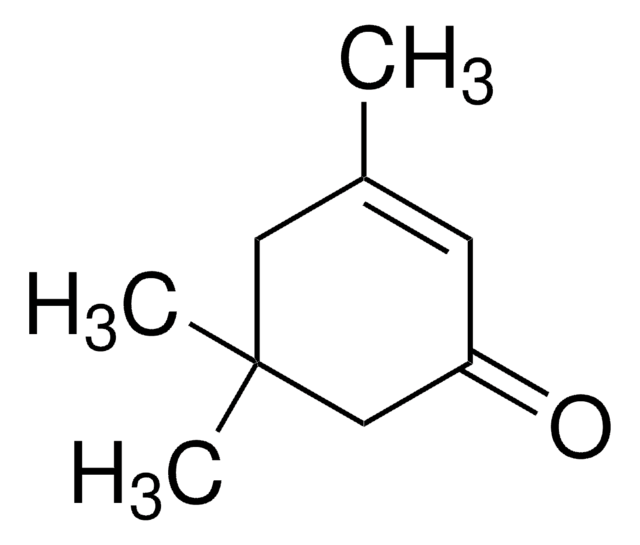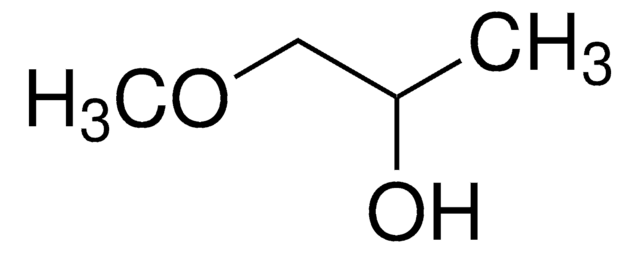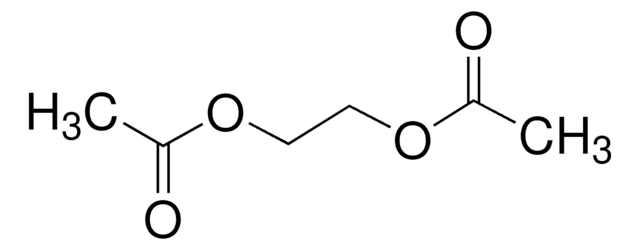109967
2-Ethoxyethyl acetate
98%
Sinónimos:
1-Acetoxy-2-ethoxyethane, Cellosolve® acetate, Ethylene glycol monoethyl ether acetate
About This Item
Productos recomendados
vapor density
4.6 (vs air)
Quality Level
vapor pressure
2 mmHg ( 20 °C)
assay
98%
form
liquid
autoignition temp.
715 °F
expl. lim.
13 %
technique(s)
microbiological culture: suitable
refractive index
n20/D 1.403-1.409
n20/D 1.406 (lit.)
bp
156 °C (lit.)
mp
−61 °C (lit.)
solubility
H2O: soluble about 6 parts
density
0.975 g/mL at 25 °C (lit.)
functional group
ester
ether
SMILES string
CCOCCOC(C)=O
InChI
1S/C6H12O3/c1-3-8-4-5-9-6(2)7/h3-5H2,1-2H3
InChI key
SVONRAPFKPVNKG-UHFFFAOYSA-N
¿Está buscando productos similares? Visita Guía de comparación de productos
Application
Legal Information
signalword
Danger
Hazard Classifications
Acute Tox. 4 Dermal - Acute Tox. 4 Inhalation - Acute Tox. 4 Oral - Flam. Liq. 3 - Repr. 1B
Storage Class
3 - Flammable liquids
wgk_germany
WGK 2
flash_point_f
129.2 °F - closed cup
flash_point_c
54 °C - closed cup
ppe
Eyeshields, Faceshields, Gloves, type ABEK (EN14387) respirator filter
Elija entre una de las versiones más recientes:
¿Ya tiene este producto?
Encuentre la documentación para los productos que ha comprado recientemente en la Biblioteca de documentos.
Los clientes también vieron
Nuestro equipo de científicos tiene experiencia en todas las áreas de investigación: Ciencias de la vida, Ciencia de los materiales, Síntesis química, Cromatografía, Analítica y muchas otras.
Póngase en contacto con el Servicio técnico












